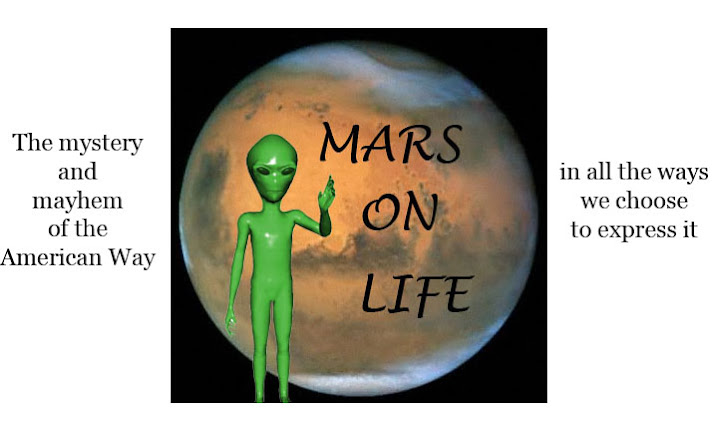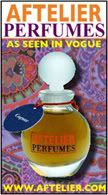Brooklyn. It's got that buzz that comes along with artistic groundswell. It hums the way the East Village and Soho used to, before those creative neighborhoods were swallowed alive by Bugaboos and Whole Foods. Brooklyn--or more particularly Williamsburg--is the hot place to be a writer, or the place to be a hot writer. Or artist, musician, or Indian chief.
Williamsburg has both the indie groove and the hipper-than-thou culture that comes along with rejecting institutions for the sake of identification. This is especially true in light of the fact that its residents have turned their backs on Manhattan, which they can still see across the river. Williamsburg is today's hip stomping ground in the way Paris was in the 1920s or San Francisco was during the Beat Generation. Since the secret is already out, there can only be decline.
Soon, the last frontier will be where it always was--Alaska. Until that day, what befell Haight Ashbury and the Lower East Side will befall Williamsburg. In due time, of course, after the forward march of expensive pram and expensive degree.
Brooklyn as an artistic and cultural showplace dates back to Spike Lee's 1985 film She's Gotta Have It, a movie that accidentally gave off an impression of arty calculation. As Lee's oeuvre expanded, Brooklyn became much like Woody Allen's Manhattan, the backdrop as character, the city anthropomorphized.
When people mention Brooklyn in the same breath as culture, they usually mean culture as a carrier of artistic and intellectual merit. What they don't mean is culture as a set of social ideologies and conditions. That would be the volatile culture of The Lords of Flatbush or that of Saturday Night Fever.
Saturday Night Fever was set in Bay Ridge, a world away from Williamsburg, under the long arm of the Verrazano-Narrows Bridge. The film had its genesis in a story written by British journalist Nik Cohn that was later proved to have been a contrivance. Cohn's story took place at 2001 Odyssey, a disco located in an industrial wasteland. 2001 Odyssey catered to a subcultural pocket of Italian-Americans who on the weekend thronged to its dance floor. That pocket of young Americans had nowhere else to go, not on Saturday night and not for the rest of their lives. They hustled, they sexed, they swore, they fought the Puerto Ricans.
More than it is remembered as responsible for the disco explosion and as the music that revived the Bee Gees, the film should be recollected as having a strong voice of both entropy and moral relativism. Although the main premise was not stepping out but stepping up, several of the film's subplots dealt with ethical quandaries and the consequences of choice. While true north was geographically located at 802 64th Street, morally it was centered in the Catholic church and in adherence to class traditions.
And then there were the costumes. It seems unfair to call them costumes when they were taken wholesale from the dance floor at 2001 Odyssey. Nineteen seventy-seven was the year of gabardine and Qiana. The former was a slightly scratchy wash-and-wear polyester used in suits and the latter was the silky nylon fiber of huckapoo shirts. With the addition of Italian horns and platform shoes, these fabrics formed the cuigine uniform. Although it wouldn't have gotten its wearers past the door at Studio 54, this was Brooklyn dapper.
If it weren't for Stephanie Mangano, Travolta's Manero may not have tried to cross the bridge into the city. Stephanie was ambitious and not unaware of the silliness of striving for something beyond one's intellectual reach. With her moderately less pigeonholed wardrobe, she was the antithesis of Annette, who wore the female disco uniform: the Danskin leotard.
By 1977, the Danskin leotard had expanded beyond the barre. That summer, the halter version was worn as a bathing suit. A companion wraparound skirt could take the leotard out for an evening of dancing. This combination had a particular American glamour even as it marked the wearer as suburban or a bridge-and-tunnel striver. You wore this outfit with Jontue, a cheap floral fragrance that had all the subtlety of bug spray.
The picaresque authenticity of Saturday Night Fever is so palpable that its truths are still close enough to feel alive. This was not a film you watched as a voyeur; it was impossible to experience it with any sort of detachment. Its complete lack of Hollywood egocentricity makes it no more tethered to the seventies than Apocalypse Now is.
Thirty years down the road, with hip glossed all over Brooklyn, the social and intellectual dead-end of Saturday Night Fever feels like a welcome breath of exhaust-filled air.
Wednesday, March 12, 2008
He Hits My Hair
Subscribe to:
Post Comments (Atom)









4 comments:
Such evocative imagery. I wasn't the right age for the themes in the film when it came out, but I saw it later, when I was, and it immediately affected me.
Ha ha! I love the "He hits my hair" line. And I remember the Danskin days so well.
'Over in the corner I could see this other guy
He was kinda flirty, he was giving me the eye
So I took advantage of the fact that I'm a star
Shook my hair and took a casual stroll up to the bar.'
I'll be in the Huckapoo, you'll be in the leopard Danskin and we'll burn up the dance floor, high on blue lagoon's.
Great post. I've always meant to watch SNF but never quite got round to it. Shocker!
Post a Comment